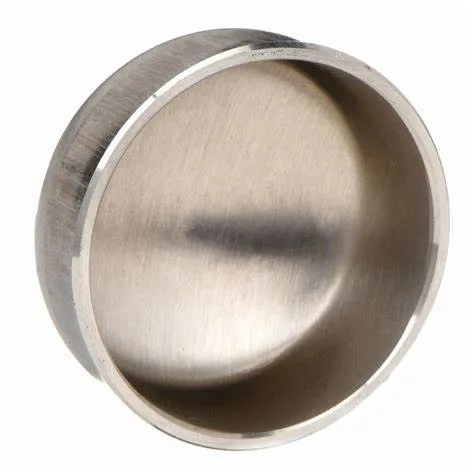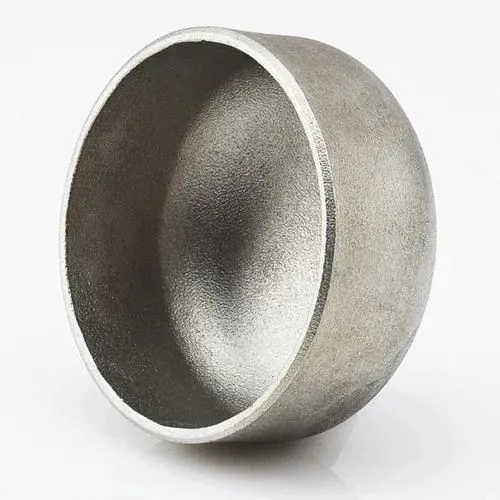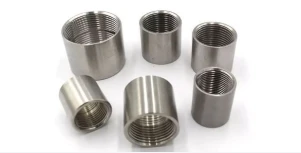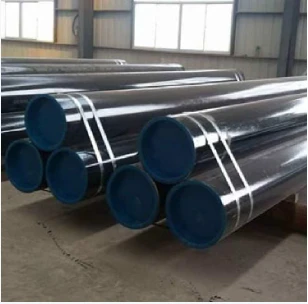JIS B2311 ni igipimo cy’inganda cy’Ubuyapani gikubiyemo imiyoboro yo gusudira, harimo ingofero zikoreshwa muri sisitemu. Ibifuniko byo gusudira bifata intego yo gufunga umuyoboro, gutanga kashe kugirango wirinde kumeneka cyangwa kwanduzwa. Dore intangiriro ya JIS B2311 ingofero yo gusudira:
- 1. JIS B2311 Standard:
- - JIS B2311 isanzwe isobanura ibisabwa mugushushanya, ibipimo, ibikoresho, gukora, no kugerageza ibikoresho byo gusudira, harimo imipira, muri sisitemu yo kuvoma.
- - Igipimo cyemeza ko imipira yakozwe yubahiriza ibipimo bya JIS yujuje ubuziranenge kandi igahuzwa nibindi bikoresho.
- 2. Igituba cyo gusudira:
- - Ikariso yo gusudira, nkuko JIS B2311 ibivuga, ni igikoresho cyagenewe gupfuka no gufunga impera y’umuyoboro neza, gitanga uburinzi kandi kigakomeza ubusugire bw’imiyoboro.
- - Ingofero zikoreshwa mubihe aho umuyoboro wanyuma usaba gufunga, burundu cyangwa byigihe gito, kugirango wirinde kumeneka, kwanduza, cyangwa gutanga iherezo kuri sisitemu.
- 3. Ibikoresho nubwubatsi:
- - Ibifuniko byo gusudira munsi ya JIS B2311 biraboneka mubikoresho bitandukanye nk'ibyuma bya karubone, ibyuma bitagira umwanda, hamwe n'ibyuma bivangavanze kugirango byuzuze ibisabwa bitandukanye.
- - Iyi mipira ikorwa hakoreshejwe uburyo bwubatswe bwubatswe kugirango harebwe isano ikomeye kandi idasohoka iyo isuditswe kugeza impera yumuyoboro.
- 4. Gusaba ninyungu:
- - Utubuto two gusudira dusanga porogaramu mu nganda zinyuranye, zirimo peteroli na gaze, gutunganya imiti, inganda zitunganya amazi, n’ibindi aho imiyoboro ikenera gufatirwa neza.
- - Ingofero zitanga uburinzi ku miyoboro iva mu bidukikije, ikumira umwanda, kandi igafasha kubungabunga isuku n’ubusugire bwa sisitemu yo kuvoma.
- 5. Kwinjiza no gusudira:
- .
- - Welding nuburyo busanzwe bwo guhuza imipira kumiyoboro, gutanga gufunga umutekano kandi uhoraho bishobora kwihanganira umuvuduko, ihindagurika ryubushyuhe, hamwe namazi atemba muri sisitemu.
- Muri make, JIS B2311 imipira yo gusudira ningingo zingenzi zikoreshwa muri sisitemu yo kuvoma no gufunga no kurinda iherezo ryimiyoboro neza. Iyi capa ihuye nibisabwa bisanzwe kugirango hamenyekane ubuziranenge, ubwizerwe, no guhuza mubikorwa byinganda aho gufunga imiyoboro no kurinda bikenewe.
What Is a Butt Welding Cap and How Is It Used in Industrial Piping?
In industrial piping systems, end-of-line sealing and branch closures require robust solutions. A butt welding cap serves as a critical component for terminating pipes securely. By providing a seamless, welded closure, this fitting maintains system integrity, prevents leaks, and supports compliance with industry standards.
What Is a Butt Welding Cap?
A butt welding cap—also called a pipe end cap or buttweld end cap—is a round fitting designed to close off the end of a pipe. It’s manufactured to match the pipe’s outer diameter and schedule, with either a hemispherical or flat face. To install, both the pipe end and cap are beveled to form a V‑groove, enabling full‑penetration, fusion welds. Common materials include carbon steel, stainless steel, nickel alloys, and other engineered grades, chosen to satisfy pressure, temperature, and corrosion‑resistance requirements.
How Is Butt Welding Cap Used in Industrial Piping?
Butt welding caps find application across oil & gas, petrochemical, power generation, water treatment, and general process industries for both permanent and temporary closures. During hydrostatic testing, technicians install caps to seal off sections of piping while monitoring for leaks. In new construction or retrofit projects, caps terminate branch lines, future tie‑in spools, or dead‑end mains until system expansion. Welders prepare each joint by cleaning and beveling surfaces, aligning the cap precisely, and executing a root pass followed by filler passes per the qualified Welding Procedure Specification (WPS). Post‑weld heat treatment and non‑destructive examination (NDE)—such as radiography or ultrasonic testing—verify weld integrity and compliance with ASME B16.9 and related standards. Additionally, temporary caps enable safe isolation during maintenance, allowing for segment testing and dewatering under regulatory protocols.
Benefits and Best Practices
Butt welding caps offer a smooth‑bore transition that minimizes flow disruption and stress concentration. Their full‑penetration welds deliver exceptional structural strength and leak resistance. To optimize performance, engineers should:
Select caps with matching material grades and wall thicknesses
Adhere to proper bevel angles and joint fit‑up tolerances
Follow qualified WPS protocols rigorously
Consider cladding or protective coatings in corrosive environments to extend service life
Regular inspection and thorough documentation ensure long‑term reliability and safe operation under demanding conditions.
Butt welding caps are indispensable components for achieving durable, leak‑proof pipe terminations in a wide range of industrial applications.
Butt Welding Cap FAQs
What is a butt welding cap?
|
What materials are commonly used?
|
What standards govern butt welding caps?
|
How are butt welding caps installed?
|
Where are butt welding caps typically used?
|
What are the advantages of threaded caps?
|
















